
4 minute read
Fynbos ... our pride and joy


Advertisement
By Bernadette Van Zyl Dezine-a-garden WhatsApp at 082 856 7096 Ref: www.gaiasorganicgardens.com.au
From the daintiest Erica to our majestic national flower, the Protea, we all want to add these indigenous beauties to our gardens. The only problem is most passionate gardeners literally love them to death! Growing fynbos with success requires a certain measure of restraint – call it tough love – and by following a few basic guidelines, they can be grown with success and a great deal of pleasure.
Fynbos… our pride and joy!
Continued from page 33
Fynbos is one of only 6 floral kingdoms around the world, is the most biodiverse plant habitat in the world and the only one that is located entirely in one country. No wonder we all want them in our gardens…what’s not to want?
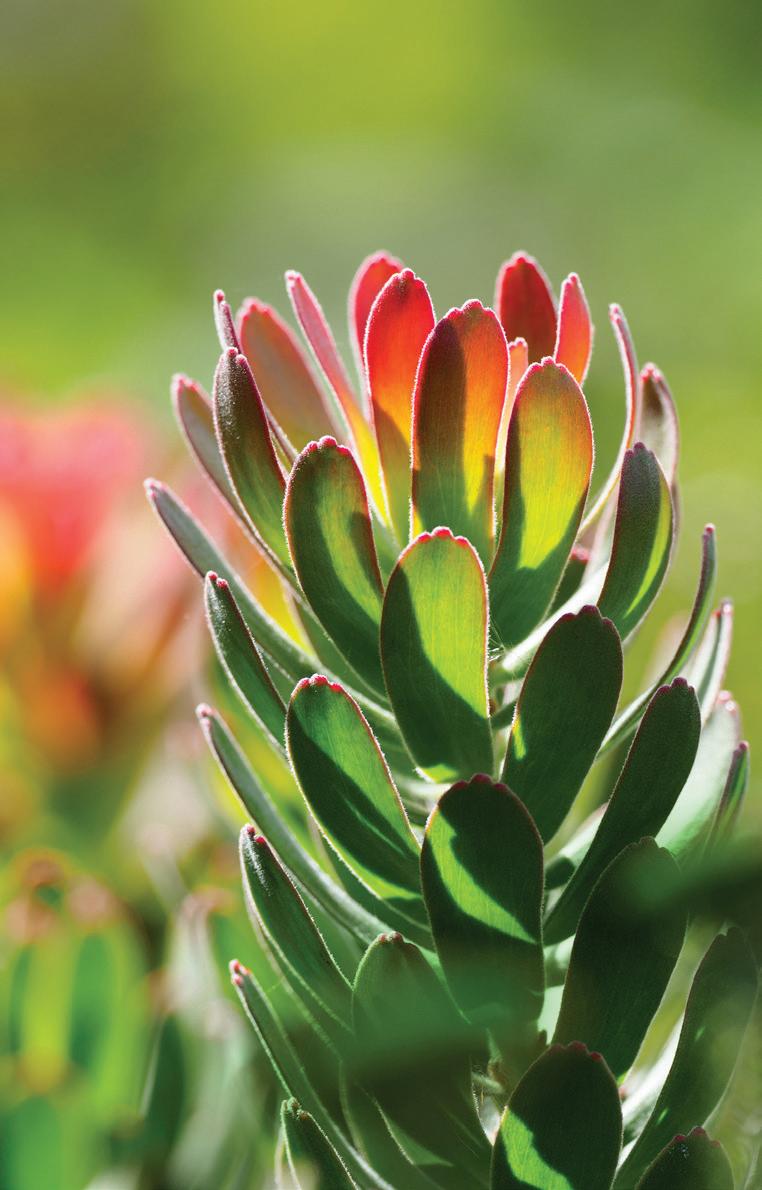
Although most of the Fynbos are endemic to the winter rainfall area of the Western and part of the Eastern Cape, some, particularly the Proteas, Pincushions and Leucospermums, also occur naturally in the summer rainfall areas, like here on the Highveld especially in the Roodekrans protected nature areas. Keep in mind that most fynbos plants are relatively short-lived and will have to be replaced occasionally.
Image: Jean vd Meulen from Pixabay
Position
Plant in full sun, i.e. at least 6 hours of sun per day. Morning sun is preferable to the hot, afternoon sun. Plant in a position with very good air circulation.
Planting
In situ Plant fynbos in August or September when all danger of frost has passed, but days are still cool. Very important is well-drained, acidic soil that is well-aerated with no more that 30% clay in top and subsoil. Choose the position with care as transplanting is not recommended at all. Dig a hole twice the size of the pot the plant is in. When removing the plant from the pot, avoid root disturbance as much as possible.
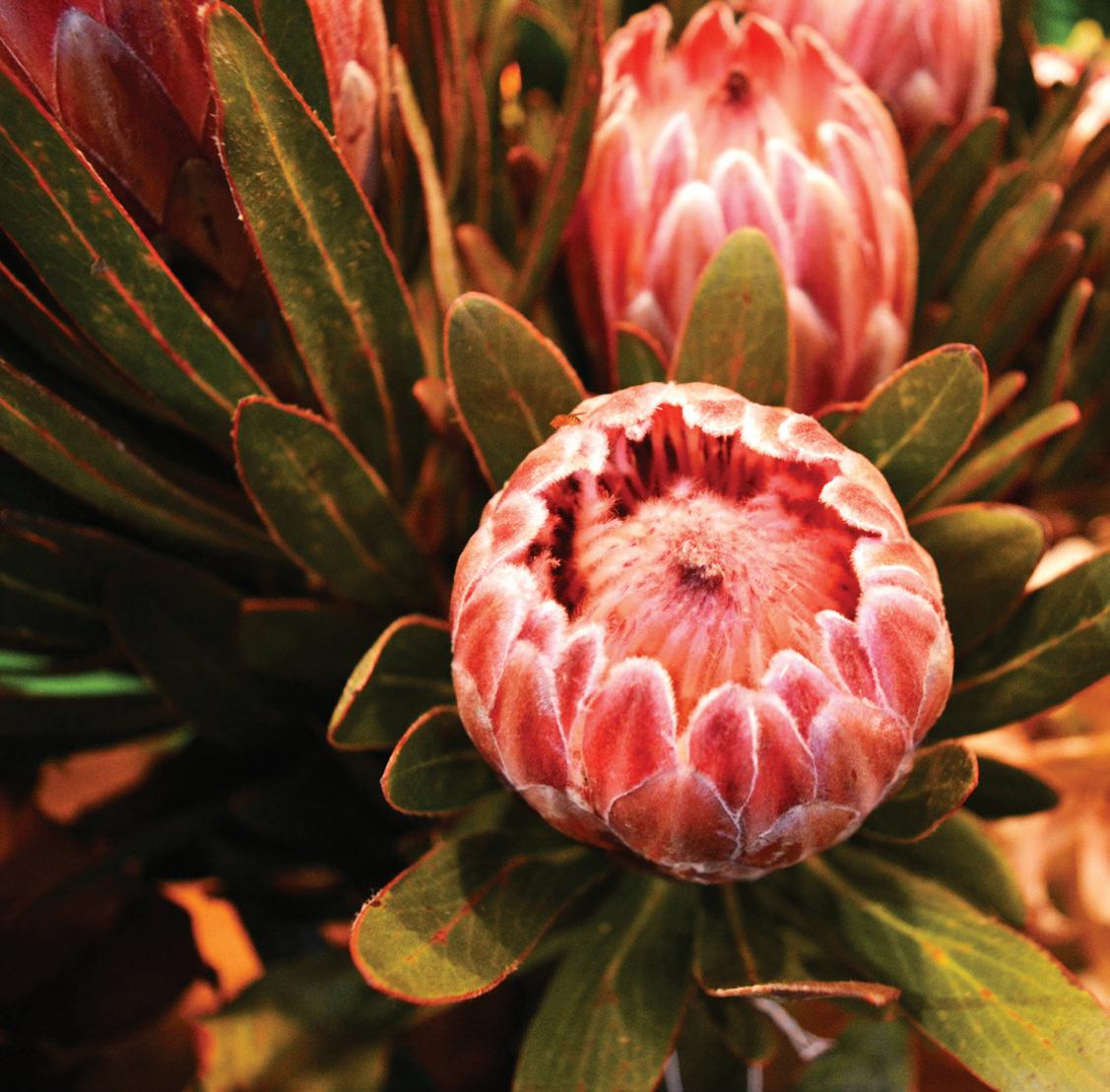
Do not add bonemeal, fertilizer or compost when planting. Acid compost or well-composted pine bark can be added to the soil that was removed to increase acidity in the soil, if needed. Mix in thoroughly. Place some of this soil back into the hole, ensuring the plant is at the same level as it was in the pot. Firm the soil down around each plant and water well. Proteaceae like to be planted in groups, as they occur in nature. This provides support in strong wind, root protection, keeps the soil cool and gives a gorgeous display.
Image: SilvanaGodoy from Pixabay
Fynbos… our pride and joy!
Continued from page 34
In containers Low growing species of fynbos lend themselves very well to containerizing and have become very trendy. The plant’s suitability to pots will be indicated on the label. Ensure that the container has sufficient drainage holes and spread a layer of gravel at the bottom of the pot. Plant your fynbos in a mixture of organic potting soil to which acid compost and river sand has been added. Do not add bone meal when planting.
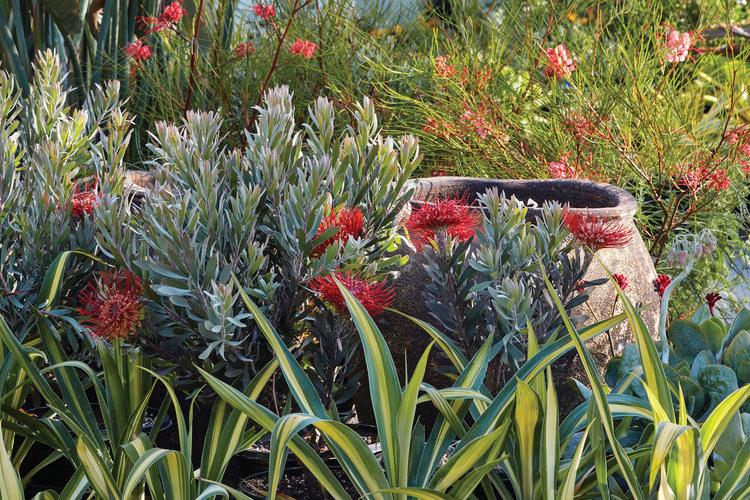
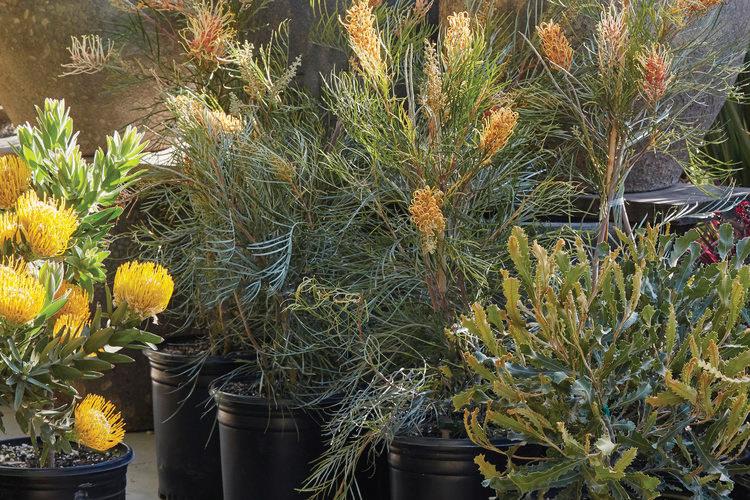
Image: Victor R. MacGill from Pixabay
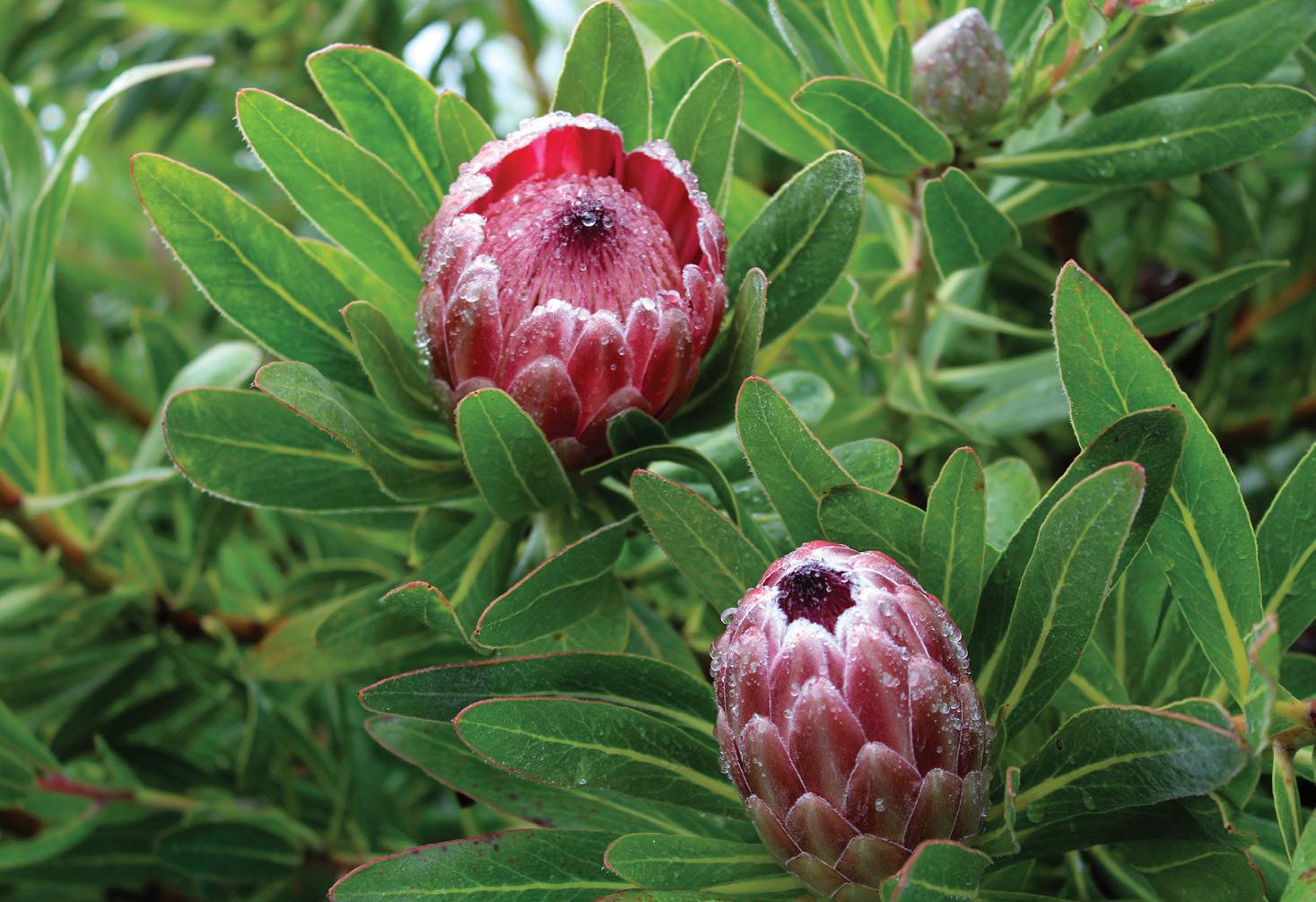
Hardiness
Cover young plants (first 2 years) with frost cover until they are well established, especially areas close to the river. Mature plants can tolerate light frost. Watering
During the first two summers after planting, water your plants thoroughly and deeply 2-3 times per week, depending on the rainfall conditions. Most fynbos are waterwise once fully established and watering can be reduced accordingly. If planted in sandy soil or in containers, they need to be watered daily or every second day, especially during the hot, dry season. Watering is best done in the early morning to avoid fungal infections.
Mulching
After planting, spread a thick (5-8cm) layer of mulch around the plant. Keep away from the stem to avoid fungal diseases. Mulch will help to retain soil moisture and keep roots cool. The surface roots of fynbos are very sensitive and mulch also helps to suppress weed growth, resulting in less interference with the area around these roots. Acid compost, Eucalyptus mulch and wellaged pine needles or bark make excellent mulch. Avoid using mushroom compost as this is high in phosphorus.
Feeding
Proteacea naturally thrive in nutrientpoor soil and there is very little need for additional fertilizing. Healthy plant material, removed during pruning, can be cut into smaller bits and scattered around the bushes to decompose and replenish soil. Fertilisers derived from seaweed and fish can be applied at half the recommended rate with plenty of water to assist in root formation, particularly in young plants. In sandy soils and in potted plants one of the recommended organic, granular fertilisers can be applied at the rate of 60g/m² on the surface around the plant and watered in well. Apply three times a year from August to April.
Absolutely avoid the following: • Artificial fertilisers high in phosphorus and nitrogen • The addition of compost to the soil • Manure, mushroom compost and bone meal


www.sqruimsig.co.za







